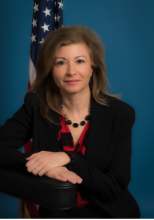MAE 298 SEMINAR: Mission Architecture Requirements for Safe Human Expeditions to Mars

Abstract: Planning is underway at NASA for returning humans to the Moon, followed by human missions to Mars. This talk highlights integrated risks to the crew on long-duration expeditions to Mars and specific technologies, engineering solutions, mission architectures and advanced reconnaissance needed to reduce the risk to the crew during their journey to Mars. Some of the technologies and mission architecture requirements discussed in this talk include: 1) fast Mars transit, where the round trip duration of Mars missions is limited approximately to one year to minimize the overall flight risks; 2) improved radiation monitoring and shielding techniques, to predict and reduce the harmful impacts of galactic cosmic radiation on the crew; 3) optimizing the timing of Mars missions based on the variability of solar cycle and its impact on radiation dose to the crew; 4) Human-System Integration Architecture design requirements to mitigate risks associated with spacecraft management and anomaly resolution during exploration missions with increased Earth independence; 5) future Mars reconnaissance missions needed in advance of the first human landing on Mars to ensure astronaut safety and mission success such as high resolution mapping of the Martian terrain, surface weather on Mars and real-time space weather forecasting on Mars.
Bio: Azita Valinia was named the deputy director of the NASA Office of JPL Management and Oversight at the agency’s Jet Propulsion Laboratory (JPL) in July 2023. In this role, she leads oversight of NASA’s largest contract, the Caltech/JPL FFRDC on behalf of NASA headquarters. She brings over 20 years of experience in NASA program management spanning areas in Earth and space sciences research, technology development, engineering and space science mission management. She is certified by the NASA Federal Acquisition Certification for Program/Project Managers at the senior expert level. Prior to this appointment, Valinia served as the chief scientist of NASA Engineering and Safety Center. In this role, she built bridges between NASA’s science, engineering and technology communities. She led several technical interdisciplinary assessments for the agency developing strategies and recommendations designed to help enable NASA’s Moon to Mars objectives, while ensuring safe human expeditions to the Moon, Mars and beyond. Since joining NASA in 2000, Valinia has served in various leadership roles at NASA. These include deputy director of the Astrophysics Flight Projects Division at NASA Goddard Space Flight Center (GSFC), overseeing a portfolio of over 20 space science flight missions in operation including the Hubble Space Telescope. As the associate director for R&D at the Sciences and Exploration Directorate at GSFC, she was responsible for the strategic development and implementation of the organization’s science and technology development portfolio as well as future advanced mission concept formulations. Valinia led the technical assessment teams that laid out NASA’s decadal Earth science technology investment strategy (in 2006 and 2016). Both strategies informed the deliberations and recommendations of the National Academy of Sciences' Earth science decadal surveys committees (in 2007 and 2017). Together with the engineering directorate leadership at GSFC, Valinia created two high-impact interdisciplinary programs, the Science-Engineering Collaboration Program and the Research Engineering Program, fostering strong collaborations between the science and engineering directorates at GSFC. She served on the NASA Headquarters Task Force that recommended and implemented the Science Innovation Fund program at NASA. Valinia earned a bachelor's degree in physics from the University of Houston and a doctorate in physics from the University of Texas at Austin. She has authored or co-authored over 60 articles in technical journals encompassing topics in astrophysics, Earth and planetary sciences research as well as mission concept formulation, technology development, engineering management and human space flight. She is the recipient of NASA’s Outstanding Leadership Medal, and NASA’s Silver Snoopy Award for her outstanding contributions related to human space flight safety.
Share
Upcoming Events
-
MSE Special Seminar: Revolutionizing Battery Technology - Engineering Quantum Materials for Enhanced Safety and Performance in Solid Electrolytes
-
MSE Special Seminar: Designing Sustainable Soft Matter from the Molecule Up
-
EECS Seminar: On-device Contextual AI – Challenges and Opportunities
-
MAE 298 SEMINAR: Control and Estimation of Turbulent Shear Flows using Modal Analysis
-
MSE Special Seminar: Organic Semiconductor-incorporated Perovskites (OSIP) – A New Family of Hybrid
